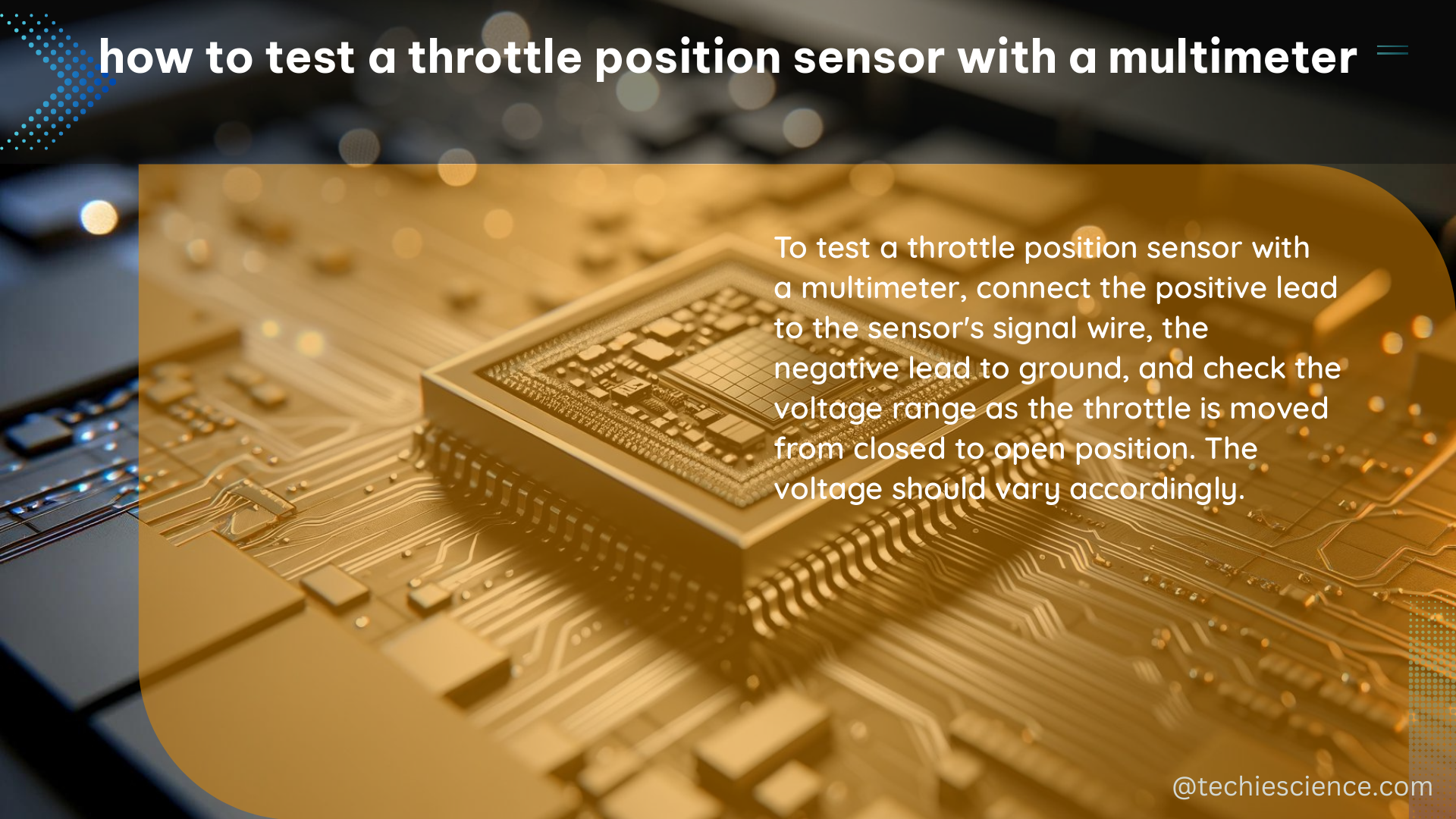The throttle position sensor (TPS) is a critical component of the engine management system, responsible for providing the engine control module (ECM) with information about the position of the throttle. Proper testing of the TPS is essential to ensure optimal engine performance, fuel efficiency, and drivability. In this comprehensive guide, we’ll walk you through the step-by-step process of testing a throttle position sensor using a multimeter.
Locate the Throttle Position Sensor
The first step in testing a TPS is to locate it on your vehicle. The TPS is typically mounted on the throttle body, which is attached to the intake manifold. The TPS is a three-wire sensor, with the wires typically color-coded as follows:
- Red wire: Power
- Black wire: Ground
- Yellow wire: Signal
Set Up the Multimeter

Before you begin testing the TPS, you’ll need to set up your multimeter. Set the multimeter to the ohms (Ω) setting, which will allow you to measure the resistance of the TPS.
Test the Resistance
With the TPS connector disconnected, touch the multimeter probes to the signal wire (yellow) and the ground wire (black). The multimeter should read a resistance value between 0.5 and 1.5 ohms. This resistance value can vary depending on the manufacturer, so it’s essential to consult your vehicle’s service manual for the specific resistance range.
If the resistance value is outside the specified range, it may indicate a problem with the TPS or the wiring. In this case, you’ll need to further investigate the issue.
Test the Voltage
Next, reconnect the TPS connector and turn the ignition key to the “on” position without starting the engine. Touch the multimeter probes to the signal wire (yellow) and the power wire (red). The multimeter should read a voltage between 0.2 and 4.5 volts, depending on the throttle position.
Again, refer to your vehicle’s service manual for the specific voltage range for your TPS. If the voltage reading is outside the specified range, it may indicate a problem with the TPS or the wiring.
Test the Continuity
Finally, touch the multimeter probes to the power wire (red) and the ground wire (black). The multimeter should read zero ohms, indicating continuity between these two wires.
If the multimeter does not read zero ohms, it may indicate a problem with the TPS or the wiring, and further investigation will be required.
Technical Specifications for Testing a TPS with a Multimeter
Here are the key technical specifications to keep in mind when testing a TPS with a multimeter:
| Specification | Range |
|---|---|
| Resistance | 0.5 to 1.5 ohms |
| Voltage | 0.2 to 4.5 volts |
| Continuity | Zero ohms |
Remember to always consult your vehicle’s service manual for the specific resistance, voltage, and continuity ranges for your TPS, as these can vary depending on the manufacturer and model.
Additional Testing Methods
In addition to using a multimeter, there are other tools and techniques you can use to test a TPS:
- Scan Tool: A scan tool can be used to monitor the TPS voltage signal in real-time, which can help diagnose issues with the TPS.
- Noid Light: A noid light can be used to test the TPS circuit and confirm that the TPS is sending a signal to the ECM.
Conclusion
Testing a throttle position sensor with a multimeter is a crucial step in diagnosing and troubleshooting engine performance issues. By following the steps outlined in this guide and referring to your vehicle’s service manual, you can accurately test the resistance, voltage, and continuity of the TPS to ensure it is functioning properly. Remember to always exercise caution when working with electrical components and consult a professional if you’re unsure about any aspect of the testing process.
References
- How to Test a Throttle Position Sensor
- Throttle Position Sensor Testing and Replacement
- Throttle Position Sensor (TPS) Testing and Replacement

The lambdageeks.com Core SME Team is a group of experienced subject matter experts from diverse scientific and technical fields including Physics, Chemistry, Technology,Electronics & Electrical Engineering, Automotive, Mechanical Engineering. Our team collaborates to create high-quality, well-researched articles on a wide range of science and technology topics for the lambdageeks.com website.
All Our Senior SME are having more than 7 Years of experience in the respective fields . They are either Working Industry Professionals or assocaited With different Universities. Refer Our Authors Page to get to know About our Core SMEs.